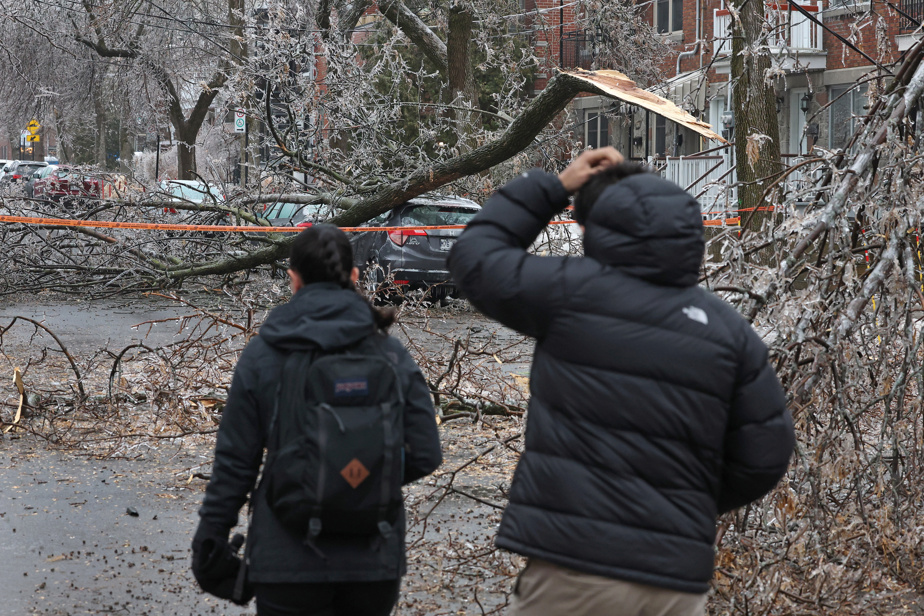Many of the branches that have given way under the weight of the ice in recent hours are new shoots that sprouted 25 years ago from the wounds of trees damaged by the historic 1998 ice storm, say forestry engineers consulted by La Presse.
Engineer and forest pathologist Pierre-Émile Rocray, who worked for the City of Montreal for more than 25 years, called them “pickle pickers.” These stunted trees in the aftermath of the ice storm have, in most cases, survived the historic storm. “Their branches have grown back over the wounds, and they have grown tremendously over the past 25 years. But they are often loosely attached,” he says.
In many cases, these branches were decayed or affected by what experts call “embedded bark”, a structural defect between the branch and the trunk, which makes them more vulnerable to overloading.
“Just looking at the footage that’s been on the air for 24 hours, you can tell from the staining of the wood that those branches had flaws. It precipitated their breakage,” adds forest engineer Gabriel Daigneault, president of Xylème, a firm specializing in urban forestry that does business with several boroughs of the City of Montreal.
The wind, which kicked in Wednesday night, also had a big impact, said Bruno Chicoine, a forestry engineer with the National Capital Commission, who worked for the City of Montreal for four years. “In 1998, it took a lot more ice accumulation before the trees broke. Wednesday, the wind was coming from everywhere. Where I was, ice accumulated on three sides of the building,” he said.
In the aftermath of the ice storm, Mr. Rocray and several tree inspectors from the City of Montreal had made an exhaustive inventory.
“These trees that I called pickle pickers, ideally, they should have been cut down at the time,” says Rocray. But that was a huge cost. In the end, they played their role well for several years. »
Bruno Chicoine nevertheless believes that better maintenance could have avoided some of the damage that occurred on Wednesday. “These are issues that could have been corrected by the interview,” he believes. Our trees lack maintenance. We should be more proactive, especially with trees that have already suffered damage. »
“Several boroughs are catching up. The cities are not doing all the maintenance work that should be done, confirms Mr. Daigneault. But the fact remains that ice storms are extremely stressful for trees. It puts a load on them far beyond their capacity, it’s much heavier than the leaves,” he points out.
The good news is that if the spectacle in the streets of the Montreal region is desolate for the moment, most of the trees will recover, assure the three forest engineers. “The dead branches and the rotten wood, nature gets rid of them,” summarizes Mr. Rocray. But the tree, he wants to survive, it is in his nature to make new branches. »

